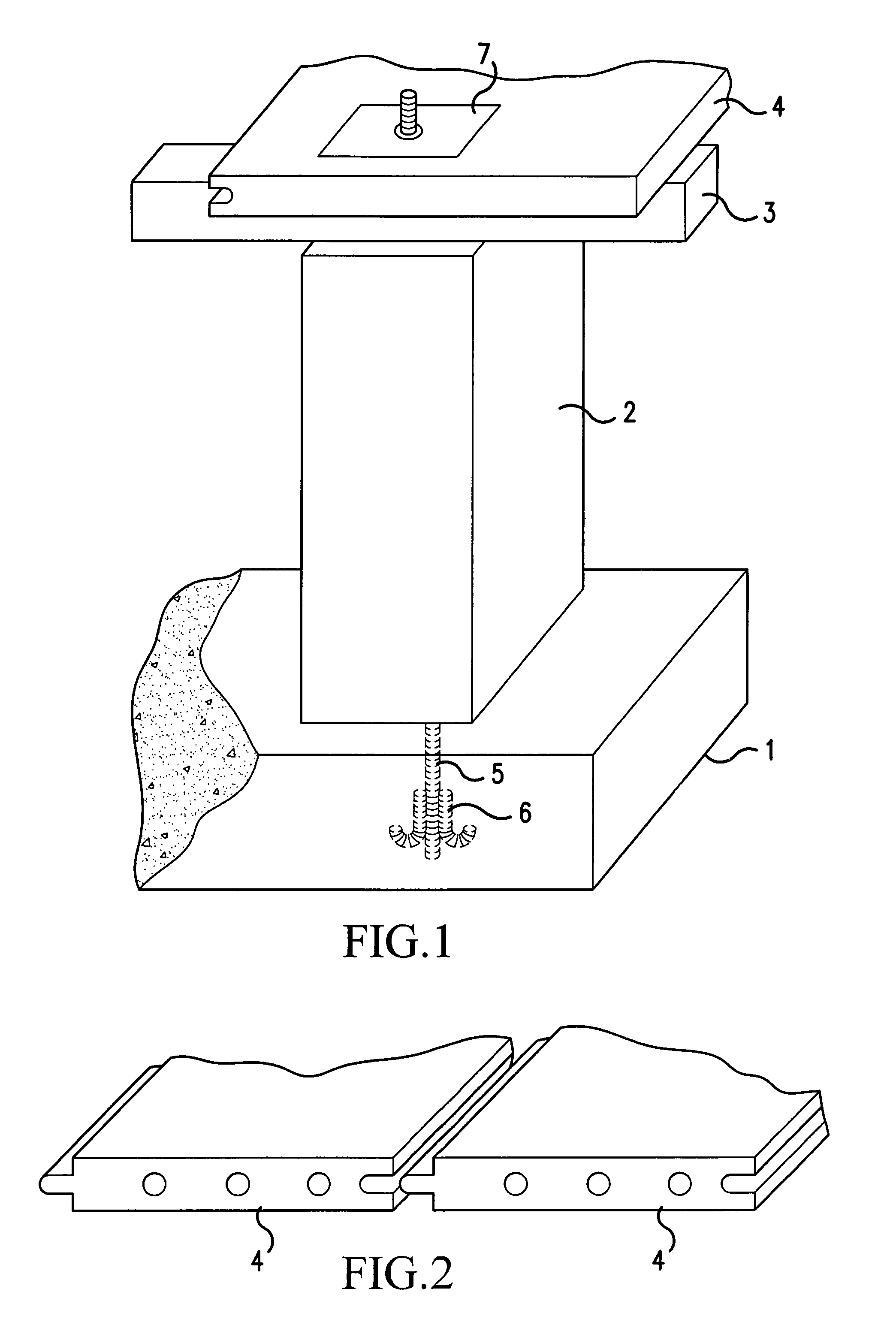Cementitious composition
a technology of cementitious composition and cementitious materials, applied in the direction of solid waste management, sustainable waste treatment, foundation engineering, etc., can solve the problems of not being able to place used tires in landfills, industrial waste disposal has become a worldwide problem, and the disposal of used vehicle tires is particularly troublesome, so as to improve the performance characteristics of the composition, reduce the effect of strength and weigh
- Summary
- Abstract
- Description
- Claims
- Application Information
AI Technical Summary
Benefits of technology
Problems solved by technology
Method used
Image
Examples
example 1
[0026]
Virgin polyethylene strips13.0 partsFly Ash70.0 partsBottom Ash60.0 partsWoodchips35.0 partsCement27.5 partsWater100.0 parts
example 2
[0027]
Virgin polyethylene strips13.0 partsCement30.0 partsRecycled shredded tires63.5 partsFly Ash40.0 partsBottom Ash55.0 partsWater113.5 parts
example 3
[0028]
Virgin polyethylene strips13.0 partsBottom Ash120.0 parts Fly Ash70.0 partsStyrofoam Recyclables70.0 partsSand20.0 partsCement30.0 partsWater113.5 parts
[0029]Materials made from the compositions of this invention are highly resistant to heat and flames. A four-inch thick specimen of material was tested by applying a direct flame, hot enough to cut steel, to one side of the specimen for 5 minutes. The test showed that the material was cool to the touch on the opposite side of the specimen. Additionally the material has a thermal conductivity of approximately 50% that of conventional concrete. These properties make this material especially well suited for firewalls, building components, and other applications where a high degree of fire resistance and heat insulation are required.
[0030]FIG. 1 illustrates a steel reinforced structure using components made from the above described improved cementitious material or similar cementitious materials. High ductile steel reinforcing rod...
PUM
| Property | Measurement | Unit |
|---|---|---|
| thickness | aaaaa | aaaaa |
| cementitious composition | aaaaa | aaaaa |
| weight | aaaaa | aaaaa |
Abstract
Description
Claims
Application Information
 Login to View More
Login to View More - R&D
- Intellectual Property
- Life Sciences
- Materials
- Tech Scout
- Unparalleled Data Quality
- Higher Quality Content
- 60% Fewer Hallucinations
Browse by: Latest US Patents, China's latest patents, Technical Efficacy Thesaurus, Application Domain, Technology Topic, Popular Technical Reports.
© 2025 PatSnap. All rights reserved.Legal|Privacy policy|Modern Slavery Act Transparency Statement|Sitemap|About US| Contact US: help@patsnap.com

